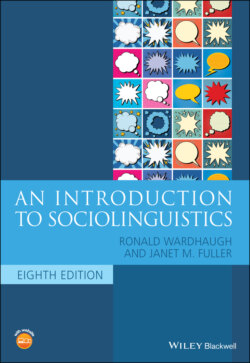Читать книгу An Introduction to Sociolinguistics - Ronald Wardhaugh, Janet M. Fuller - Страница 28
Correlations
ОглавлениеIt is possible to claim a relationship between the use of certain features of language and social structure, and such correlational studies have long formed a significant part of sociolinguistic work. Gumperz (1971, 223) has observed that sociolinguistics is an attempt to find correlations between social structure and linguistic structure and to observe any changes that occur. The approach to sociolinguistics which focuses on such correlations and the quantitative analysis of them is often called variationist sociolinguistics, and the theory and methodology of this will be discussed in chapter 5.
It is important to note that correlation only shows a relationship between two variables; it does not show causation. To find that X and Y are related is not necessarily to discover that X causes Y (or Y causes X). For example, to find that female language users use more standard features than male language users in a given community does not prove that being female causes someone to speak in a more standard manner (see chapter 5 for a discussion of how such findings have been interpreted, and chapter 11 for a broader discussion of language and gender). We must always exercise caution when we attempt to draw conclusions from such relationships.
As noted by Eckert (2012), although first and second wave variationist sociolinguistic studies focused on such correlations of specific variables and static social categories, third wave variation study embraces the ideas about language as a means for constructing social identities, not reflecting them (see chapter 5 for a deeper discussion of the three waves of research). These different ideas about the role of language in society, and society in language, reflect the multiple influences from different academic fields of study on contemporary sociolinguistics; this is the topic of the next section.
